Refine search
Actions for selected content:
113 results
Emotions and political legitimacy in eighteenth-century North India: the case of the Afghan text Ḵẖulāṣat ul-Ansāb
-
- Journal:
- Journal of the Royal Asiatic Society , First View
- Published online by Cambridge University Press:
- 24 October 2025, pp. 1-19
-
- Article
-
- You have access
- Open access
- HTML
- Export citation
6 - Music in Bohemian Royal Coronations and Opera in Prague in the Seventeenth and Eighteenth Centuries
- from Part I - Before 1800
-
-
- Book:
- A History of Music in the Czech Lands
- Published online:
- 21 October 2025
- Print publication:
- 16 October 2025, pp 87-99
-
- Chapter
- Export citation
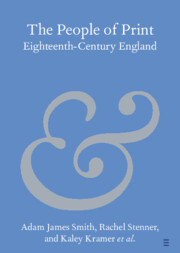
The People of Print
- Eighteenth-Century England
-
- Published online:
- 20 September 2025
- Print publication:
- 16 October 2025
-
- Element
- Export citation
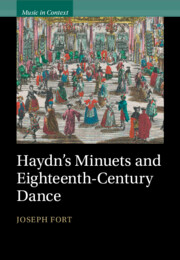
Haydn's Minuets and Eighteenth-Century Dance
-
- Published online:
- 12 September 2025
- Print publication:
- 02 October 2025
‘THE MOST ELEGANT VILLA YET PLANNED’: JOHN CARTER’S DESIGNS FOR BYWELL HALL, NORTHUMBERLAND
-
- Journal:
- The Antiquaries Journal , First View
- Published online by Cambridge University Press:
- 04 September 2025, pp. 1-24
-
- Article
-
- You have access
- Open access
- HTML
- Export citation
Chapter 15 - The Strange Case of a “Lost” Dramatic Performance
- from Part IV - Transcreating
-
-
- Book:
- Latinx Literature in Transition, 1444–1886
- Published online:
- 06 August 2025
- Print publication:
- 17 July 2025, pp 341-362
-
- Chapter
- Export citation
Chapter 1 - Archiving Indians/Indios and Fabricating Whites
- from Part I - Transacting
-
-
- Book:
- Latinx Literature in Transition, 1444–1886
- Published online:
- 06 August 2025
- Print publication:
- 17 July 2025, pp 27-54
-
- Chapter
- Export citation
Chapter 1 - The Eighteenth Century
- from Part I - The Realist Novel
-
-
- Book:
- Realism and the Novel
- Published online:
- 05 June 2025
- Print publication:
- 19 June 2025, pp 15-28
-
- Chapter
- Export citation

A Funny Thing
- Eighteenth-Century Literature Undisciplined
-
- Published online:
- 16 May 2025
- Print publication:
- 05 June 2025
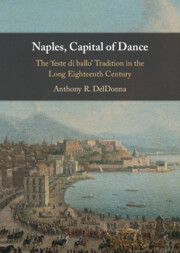
Naples, Capital of Dance
- The ‘feste di ballo' Tradition in the Long Eighteenth Century
-
- Published online:
- 10 April 2025
- Print publication:
- 17 April 2025
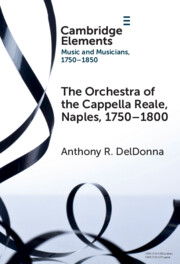
The Orchestra of the Cappella Reale, Naples, 1750–1800
-
- Published online:
- 06 March 2025
- Print publication:
- 03 April 2025
-
- Element
- Export citation
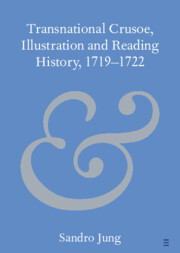
Transnational Crusoe, Illustration and Reading History, 1719–1722
-
- Published online:
- 14 February 2025
- Print publication:
- 06 March 2025
-
- Element
-
- You have access
- Open access
- HTML
- Export citation
Chapter 1 - Life and Times
-
- Book:
- The Cambridge Introduction to Samuel Johnson
- Published online:
- 07 February 2025
- Print publication:
- 13 February 2025, pp 1-22
-
- Chapter
- Export citation
Swedish Copper, Spanish Hulls: Hans Jacob Gahn, a Global Arms Race, and Consuls’ Economic Impact (1780–1784)
-
- Journal:
- Enterprise & Society , First View
- Published online by Cambridge University Press:
- 12 February 2025, pp. 1-27
-
- Article
-
- You have access
- Open access
- HTML
- Export citation
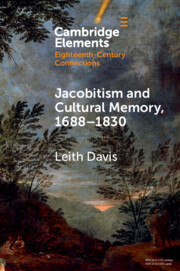
Jacobitism and Cultural Memory, 1688–1830
-
- Published online:
- 27 January 2025
- Print publication:
- 13 February 2025
-
- Element
-
- You have access
- Open access
- HTML
- Export citation
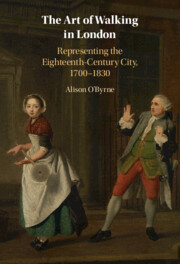
The Art of Walking in London
- Representing the Eighteenth-Century City, 1700–1830
-
- Published online:
- 19 December 2024
- Print publication:
- 23 January 2025
Introduction
-
- Book:
- From Colonial Cuba to Madrid
- Published online:
- 14 November 2024
- Print publication:
- 21 November 2024, pp 1-29
-
- Chapter
- Export citation
7 - The Polemical Essay in Pamphlets, Newsbooks, and Periodicals
- from Part I - Forming the British Essay
-
-
- Book:
- The Cambridge History of the British Essay
- Published online:
- 31 October 2024
- Print publication:
- 04 July 2024, pp 92-104
-
- Chapter
- Export citation
1 - Sexuality and Capitalism
-
-
- Book:
- The Cambridge World History of Sexualities
- Published online:
- 26 April 2024
- Print publication:
- 16 May 2024, pp 1-26
-
- Chapter
- Export citation
13 - Sex in Eighteenth-Century Paris
-
-
- Book:
- The Cambridge World History of Sexualities
- Published online:
- 26 April 2024
- Print publication:
- 16 May 2024, pp 261-284
-
- Chapter
- Export citation
